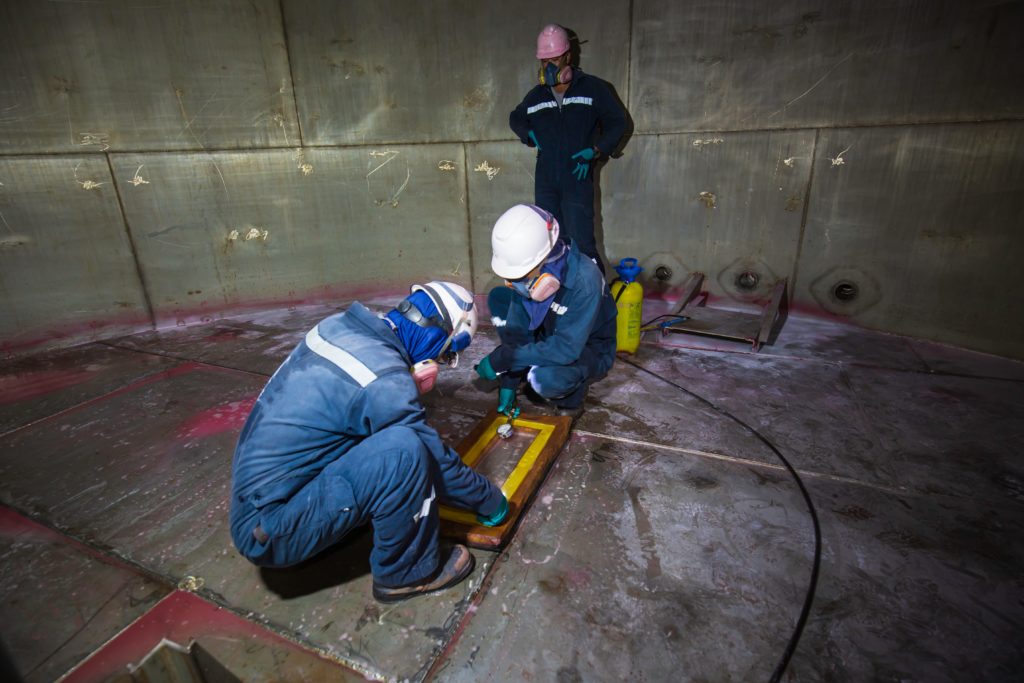Across industry and construction sites, there are times when employees of different employers are working side by side, or at least on the same site at the same time. Some industry examples are when chemical plants have contractors on-site for routine maintenance or during process shutdowns for major overhauls or repairs. OSHA refers to these as multi-employer worksites. In December of 1999, they revised their citation policy which allows for more than one employer at a worksite to be cited for conditions that violate OSHA standards.
A two step process is used to determine if more than one employer will be cited. The first step is to assign each employer involved to one of the four roles. These are defined below:
- The Creating Employer – This is the employer that caused a hazardous condition which violates an OSHA standard.
- The Exposing Employer – This is an employer whose own employees are exposed to the hazard.
- The Correcting Employer – This is an employer who is engaged in common undertaking, on the same worksite, as the exposing employer and is responsible for correcting a hazard. This usually occurs where an employer is given the responsibility of installing and/or maintaining particular safety/health equipment or devices.
- The Controlling Employer – This is an employer who has general supervisory authority over the worksite, including the power to correct safety and health violation itself or require others to correct them.
Any employer that falls into one of these four roles has obligations with respect to OSHA requirements. The second step of the process is to determine if the employer’s actions were sufficient to meet those obligations. The actions required for each role are as follows:
- The Creating Employer – Employers must not create any conditions that violate OSHA standards. Any employer that does so is citable even if none of its employees were exposed to the hazard.
- The Exposing Employer – If the exposing employer also created the hazardous condition, then they would be cited as the creating employer (see above). However, if the hazardous condition was created by another employer, the exposing employer is citable if (1) it knew of the hazardous condition or failed to exercise reasonable diligent to discover the condition, and (2) it failed to take steps consistent with its authority to protect its employees. So, if the exposing employer has the authority to correct the hazardous condition, it must do so. If the exposing employer does not have authority to correct the hazardous condition, then it must do all of the following: (1) ask the creating and/or controlling employer to correct the hazardous condition; (2) inform its employees of the hazard; and (3) take reasonable protective measures. This last step could include removing its employees from the job site if the hazard is extreme.
- The Correcting Employer – The correcting employer must exercise reasonable care in preventing and discovering violations and meet its obligations of correcting the hazard. They are citable if they fail to do so.
- The Controlling Employer – The controlling employer must use reasonable care to prevent and detect hazardous conditions on the site for all employees of every employer. If they fail to do so, they can be cited.
It is possible for one employer to assume more than just one role. As mentioned above, an exposing employer could also be the creating employer. In another instance, a controlling employer can also be the correcting employer if they are authorized to correct the hazardous condition
To review the entire policy document (which contains examples of how each employer listed above could be cited), use this link: https://www.osha.gov/enforcement/directives/cpl-02-00-124
Clearly, multi-employer worksites are more complex when it comes to OSHA violations and who has a duty to whom. Careful review of the OSHA inspection and citation reports and their citation policy is key to understanding the path forward for your specific loss.
As President of The Warren Group, Jennifer Morningstar, B.S.Ch.E, P.E., CFEI, has over 20 years of engineering experience. A licensed professional engineer in several states and a NAFI Certified Fire and Explosion Investigator, she holds a Bachelor of Science Degree in Chemical Engineering from Virginia Polytechnic Institute and State University, as well as a Master of Business Administration from the University of South Carolina. Over her 20-year engineering career, Jennifer has conducted forensic investigations involving chemical release/exposure, OSHA process safety management, industrial accident investigation, equipment failures, fires & explosions, and scope of damage/cost to repair. Jennifer is a member of the National Association of Fire Investigators (NAFI), the South Carolina chapter of the International Association of Arson Investigators (SCIAAI), and the American Institute of Chemical Engineers (AIChE).





